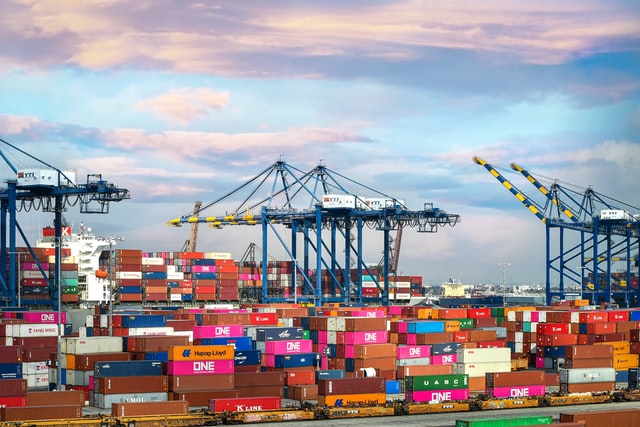World Countries through the Lens of Risk
A world map constructed on the basis of the main risk indicators: sovereign, political, exchange rate and business risks
Pubblicato da Marzia Moccia. .
Uncertainty Slowdown Macroeconomic analysis Foreign markets Export markets Conjuncture Foreign Market Analysis
In the first months of the new year an intensification of risks on the international scene has taken place. To the pre-existing sources of uncertainty, such as the American protectionist actions, the US-China trade war and the exit of the United Kingdom from the European Union, was added the uncertainty linked to the spread of the new Covid-19 epidemic. The several factors listed above persist in an already downward economic situation, strongly threatening the resumption of international trade in the short term.
In this context, it becomes even more relevant for Small and Medium-sized Exporting Companies to have a clear map of the Country Risk on the international scene, given the weight it can have on internationalisation strategies.
The choice of a target market represents a complex decision-making phase, during which it is necessary to evaluate, from a SWOT analysis perspective, both the opportunities offered by a potential country and the reliability and accessibility framework that characterizes it.
In particular, a company that carries out, or is about to carry out, transactions with foreign counterparties cannot disregard all those risk elements considered relevant. The ExportPlanning platform collects, systematises and processes the main risk indicators in the specific section Risk Factors of the Macroeconomic environment. These risk elements can be traced back to four categories:
- Sovereign risk
- Political and transfer risk
- Exchange rate risk
- Credit risk and business environment
The sovereign risk concerns the sovereign debtor's ability to honour its payment commitments. It refers not only to the actual availability of resources, but also to the country's reputation and the presence of previous debt restructuring. There are several companies that assess the degree of riskiness of a country's sovereign debt, sometimes using different methods. The database available in ExportPlanning provides the rating information of the main companies, such as Moody's, Standard&Poor, Fitch and Dagong.
The political risk category refers to the whole range of events related to high-impact political factors, such as conflicts, civil unrest or significant changes in the direction of economic policies (expropriations and nationalisations). The category also includes the transfer risk, linked to decisions by the authorities to adopt restrictions on capital movements.
The exchange rate risk category can be analysed in the short and medium-long term. The short-term exchange rate risk is linked to the possible change in the exchange rate ratio between two currencies due to exchange rate volatility. For an exporter, this risk entails a loss of purchasing power of the currency held and a consequent loss of value of receivables, if the contract refers to the counterparty's currency. For this type of risk, financial markets can offer efficient hedging instruments.
For analysis purposes, a medium-long term Studiabo exchange rate risk was taken into account, for which, unlike short-term exchange rate risk, there are not many hedging instruments. In the event of a currency depreciation, in fact, the purchasing power of the counterparty will tend to be reduced, weighing on its future demand capacity, whatever the currency in which the contracts have been defined.
It is also relevant for an exporter to associate the sovereign credit risk assessment with a summary measure of the probability of a corporate counterparty non-payment. In fact, the Italian company SACE provides a separate credit risk assessment between sovereign counterparty risk, bank counterparty risk and corporate counterparty risk. To this information, the database available in ExportPlanning makes it possible to add a general assessment of the quality of the business environment and the business environment, from Coface.
The chart below maps the degree of risk in each country, based on an overall risk indicator built on the four categories just described. Each area has been coloured according to the scores 0-100 assigned, where 0 indicates the lowest degree of risk and 100 the highest.
Overall risk indicator by Country
Source: ExportPlanning
Among the countries with the lowest risk profiles there are developed countries, which are characterised by low risk in all subcategories of the index. This is the case, for example, for the main European and overseas destination markets, such as Canada, United States and Austrialia. Similarly, on the Asian front, a low risk profile characterizes typically solid economies, such as Japan, South Korea, Singapore and Hong Kong, although the latter has seen an increase of its political risk over the past year due to recent riots. In the MENA area, the Arab Emirates achieve the best result, together with Quatar and Kuwait. However, for the latter two countries, the political and business environment risk remains moderate.
Rather low risk for most economies in eastern Europe and for China, Thailand and Indonesia stands out. By contrast, several South American countries, India and Russia, are more risky, mainly because of the risk associated with the exchange rate.
Higher risk situations occur for those countries where political unrest has a significant impact on the economic situation. This is the case, for example, of different realities in Africa and in the Middle East, or of countries struggling with critical situations, such as Cuba and Venezuela.


